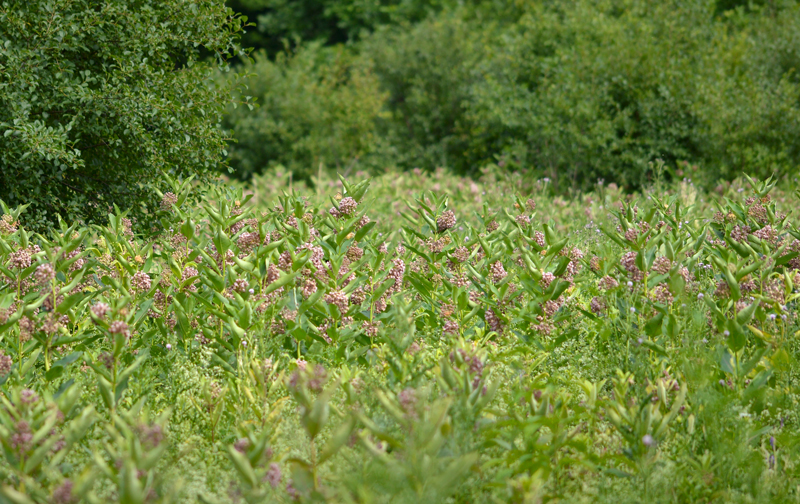Adding milkweeds and other native flowering plants into midwestern agricultural lands is key to restoring monarch butterflies, with milkweed sowers from all sectors of society being critically needed for success. Within the past two decades monarch populations east of the Rockies have declined by 80%, with similar declines found in western populations.
Because counting individual monarchs is challenging, scientists measure population size based on the geographic area that their colonies cover while spending the winter in Mexico. The population size of Eastern monarchs was 2.91 hectares, or 7.19 acres, in the winter of 2016-2017, which is a decrease from about four hectares during the 2015-2016 season. The U.S., Mexico and Canada aim to increase the number of Eastern monarchs wintering in Mexico so that they occupy about six hectares, or about 15 acres, by 2020.
A primary factor contributing to the decline is the loss of milkweed in critical breeding areas. According to the study “The current amount of milkweed in the northern US (~1.3 billion stems) is sufficient, in a year with average weather conditions, to support an overwintering population occupying 3.2 ha of [overwintering monarchs] in Mexico.” However, if we want to double the population of monarchs, we need to double the amount of milkweed – which means 1.3 additional milkweed stems need to be added to the landscape in the Midwestern U.S.

A new study by the U.S. Geological Survey, the University of Arizona and partners developed potential scenarios for incorporating milkweed into the Midwestern United States landscape to determine the most effective strategies for restoring monarch butterfly populations to pre-decline levels. Scenarios included milkweed restoration in areas including protected area grasslands, Conservation Reserve Program land, powerline, rail and roadside rights of way, urban/suburban lands, and land in agricultural production. Agricultural land was further divided into productive and marginal cropland. Xerces staff are members of the USGS Monarch Conservation Science Partnership which produced the study.
The study concludes that converting marginal cropland to monarch-friendly habitat provides the best opportunity for adding milkweed to help restore the eastern migratory monarch population. However, in addition to agricultural lands, the authors emphasized that planting milkweeds into other kinds of lands, including protected areas and urban and suburban locations, may be necessary.
“The main finding of our study is that an all-hands on deck approach could be essential to restoring the massive amounts of milkweeds needed to make the monarch population healthy again,” said Wayne Thogmartin, a USGS scientist and the lead author of the report. “These findings offer great hope for citizens from all sectors working together to reverse the substantial decline of these iconic butterflies.”
Thogmartin said that converting at least half of marginal agricultural land in the Midwest to monarch friendly habitat could result in a full population recovery. However, he said, an approach that doesn’t just rely on agricultural lands would be more robust. The research demonstrated that the non-agricultural sectors combined could provide as much as 800 million stems of milkweed, leaving agricultural lands to provide the other 800 million stems.
“Encouraging urban and suburban areas to participate along with the agricultural sector could create a crucial spark of public support and momentum for monarch conservation across the board,” said said Laura López-Hoffman, a conservation biologist at the University of Arizona who co-authored the study.
For more information about monarch butterfly research, please visit xerces.org/monarchs
This post was contributed by the USGS, USGS.gov.
The study, “Restoring monarch butterfly habitat in the Midwestern U.S.: all hands on deck,” was published in Environmental Research Letters, and is authored by Wayne Thogmartin, USGS; Laura López-Hoffman, University of Arizona; Jason Rohweder, and Jay Diffendorfer, USGS; and Ryan Drum, USFWS, and others. Read the paper at: http://iopscience.iop.org/article/10.1088/1748-9326/aa7637



